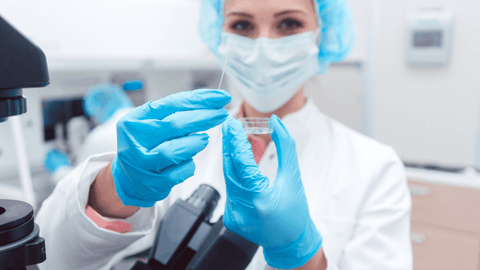What Is ICSI?
According to the data, the inability of a couple to conceive can be a complex condition to accept and live with. It is estimated that 15% of couples are struggling with infertility problems globally. About 20-30% of infertility cases are found to be male-related and contribute to 50% of patients overall. ICSI Treatment is the most common and successful male infertility treatment.

The ICSI treatment process was introduced in the year 1992 to improve fertilization in couples. Intracytoplasmic Sperm Injection, a step ahead in the IVF treatment technique, has revolutionized male infertility in recent years.
Intracytoplasmic Sperm Injection (a complete form of ICSI) is a part of In-Vitro Fertilization (IVF). It is a procedure for people with severe male factor infertility.
The Process of ICSI Treatment
Step 1: Fertility Consultation
The consultation includes a discussion with the fertility specialist, followed by a thorough medical examination. An embryologist will explain the options available to address issues related to sperm.
Step 2: Stimulation
During this stage, a woman needs to visit on day two or three of her menstrual cycle, when hormonal investigations are done along with an ultrasound. The ovaries are stimulated with medication to promote the growth of follicles containing the eggs; this process can last for eight to 12 days. The response of the ovaries will be screened through ultrasounds and blood investigations at regular intervals.
Step 3 :Egg Collection
An injection is given to help with its final maturation after eight to 12 days, and it is then removed. The patient will visit the clinic for the egg retrieval process, performed 34-36 hours after administering the trigger.
Step 4 :Sperm Collection
An embryologist processes a sperm sample that the male partner provided. If the male partner has no sperm in his epididymis or testicles, the embryologist can extract sperm from those organs.
Step 5 :Embryo Transfer
After the embryos are developed, it will be injected into the uterus to implant and impregnate the woman. A thin, flexible needle is used to inject them into the uterus.
Step 6 :After Transfer
After the embryo transfer, a woman is given medicine to help the embryo implant in the uterus. After a few weeks, pregnancy is confirmed by taking pregnancy tests.
The doctor can recommend the procedure of ICSI couples in the following cases:
- In cases of sperms with poor morphology or motility;
- In cases of low sperm count;
- In cases of men who underwent vasectomy, or those with blocked epididymis;
- When having an embryo testing for a genetic condition, and the sperm sticks to the outside of the eggs;
- Where the couple had already undergone IVF Treatment, with very few or no eggs fertilised.
References:

